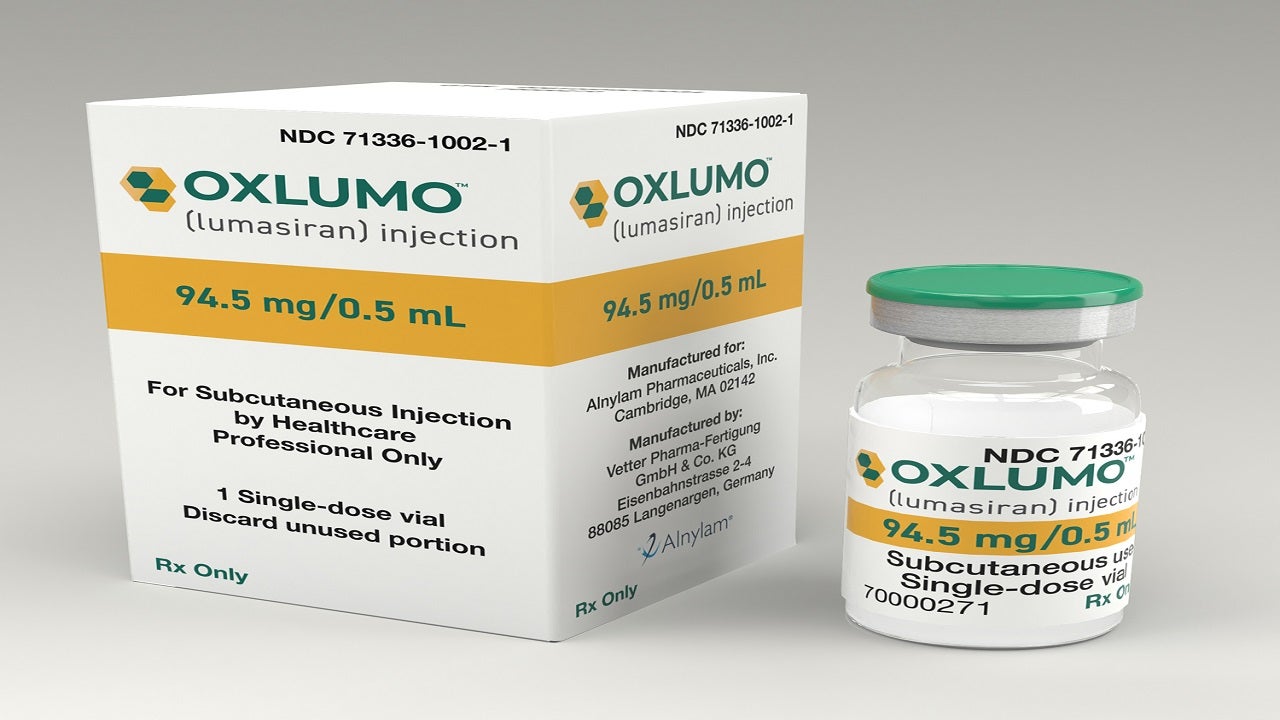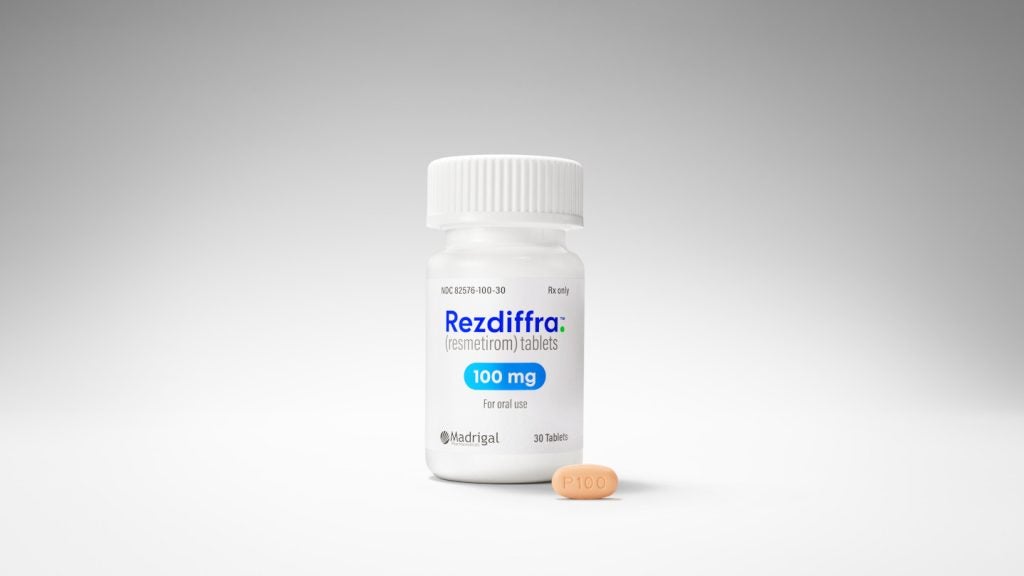OXLUMO™ (lumasiran) is the first small interfering ribonucleic acid (RNAi) therapeutics indicated for the treatment of primary hyperoxaluria type 1 (PH1) to reduce urinary oxalate levels in paediatric and adult patients.
OXLUMO (lumasiran) is available as a sterile, clear, colourless-to-yellow solution in 94.5mg/0.5ml strength in a single-dose vial for subcutaneous administration.
OXLUMO approvals
Developed by Alnylam Pharmaceuticals, lumasiran received priority medicines (PRIME) designation from the European Medicines Agency (EMA) in March 2018.
The new drug application (NDA) for lumasiran was submitted to the US Food and Drug Administration (FDA) in April 2020. It was reviewed under the priority review and received approval in November 2020. The European Commission granted marketing authorisation to lumasiran in the same month.
The drug holds orphan drug designation in both the US and European Union. The FDA has also granted breakthrough therapy and rare paediatric disease designations to the drug.
Primary hyperoxaluria type 1 (PH1) causes and symptoms
PH1 is an ultra-rare genetic disease characterised by the overproduction of oxalate that results in the accumulation of calcium oxalate crystals in the kidneys and urinary tract. It contributes to the formation of painful and recurring kidney stones, and nephrocalcinosis, progressing to renal failure and systemic organ dysfunction.
PH1 can affect people of all age groups. It causes a gradual reduction in renal function that can lead to end-stage renal failure. Patients require intensive dialysis before they can opt for dual liver or kidney transplantation.
Symptoms of PH1 are frequently associated with recurring kidney stones, including flank pain, urinary tract infections, pain during urination, and blood in the urine.
Lumasiran’s mechanism of action
Lumasiran (formerly known as ALN-GO1) targets the hydroxyacid oxidase 1 (HAO1) messenger RNA (mRNA) in hepatic cells to reduce the glycolate oxidase (GO) enzyme levels.
The GO enzyme levels decline reduces the amount of available glyoxylate, an oxalate-producing substrate that contributes to the pathophysiology of PH1.
Clinical trials on OXLUMO
FDA approval of OXLUMO was based on positive results from two multi-national phase three clinical trials, ILLUMINATE-A and ILLUMINATE-B.
ILLUMINATE-A was a randomised, double-blind, placebo-controlled study, enrolling 39 patients aged six years and older, while ILLUMINATE-B was a single-arm, open-label study, with 18 patients recruited under six years of age.
In ILLUMINATE-A, patients were randomised in 2:1 to receive either three doses of OXLUMO or placebo, once monthly, followed by quarterly maintenance doses.
The primary endpoint of ILLUMINATE-A was the improvement rate of 24-hour urinary oxalate excretion compared to placebo in six months.
The patients treated with OXLUMO demonstrated a 65% reduction in urinary oxalate compared to a 12% reduction in those receiving placebo, resulting in a mean treatment difference of 53% relative to placebo.
Approximately 52% of patients receiving OXLUMO showed urinary oxalate levels within the normal range at six months.
In ILLUMINATE B, the primary endpoint was the improvement rate in spot urinary oxalate and creatinine ratio in six months.
Patients treated with OXLUMO achieved a 72% mean reduction in spot urinary oxalate and creatinine ratio at six months.
The most frequent adverse reaction that occurred in patients during the clinical trials was injection site reactions such as redness, pain, itching, swelling at the site of injection, and abdominal pain.










